Are you interested in horseback riding but not sure which riding style is right for you? Don’t worry, I’ve got you covered! In this article, we’re going to discuss how to choose the appropriate riding style that suits your preferences and goals. If you’re excited to learn more about different riding styles and what they entail, then keep reading!
When it comes to horseback riding, there are several styles to choose from, such as English, Western, Dressage, Jumping, and Trail riding, just to name a few. Each style has its own unique characteristics and focuses on different aspects of riding. It’s important to consider factors like your riding experience, goals, and comfort level when making a decision. In this article, we’ll delve deeper into each riding style, highlighting their key features and what sets them apart from one another. By the end, you’ll have a better understanding of which riding style may be the best fit for you. So, let’s saddle up and explore the exciting world of horseback riding together!
How to Choose the Appropriate Riding Style for You
Have you ever dreamed of becoming a skilled horseback rider? Horseback riding is not only a thrilling and fun activity, but it also offers numerous physical and mental benefits. However, before you can start galloping through the fields, you need to decide on the right riding style for you. With various riding styles to choose from, it’s essential to understand their differences and consider factors such as your experience level, personal preferences, and physical fitness. In this article, we will explore different riding styles and guide you on how to choose the most suitable one for your equestrian journey.
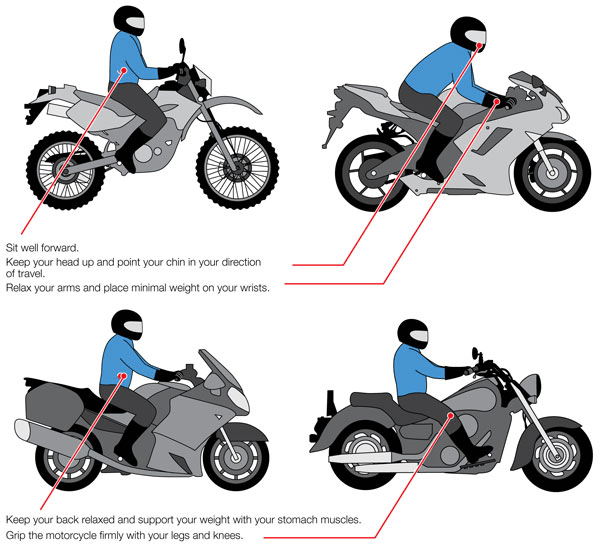
Understanding Different Riding Styles
There are several types of riding styles, each with its unique characteristics and disciplines. Let’s examine the most popular ones:
English Riding
English riding is known for its elegance and precision. Riders mainly use English saddles, which are lightweight and allow for closer contact with the horse. This style emphasizes posture, balance, and communication between horse and rider.
Western Riding
On the other hand, western riding represents a more relaxed and leisurely approach. Western saddles are larger and more comfortable, providing stability for the rider during long hours of work or trail riding. This style is commonly associated with cowboy culture and is seen in rodeos and western pleasure competitions.
Dressage Riding
Dressage riding, often referred to as the ballet of horseback riding, is rooted in precise movements and subtle cues. It focuses on developing the horse’s natural athleticism and harmony with the rider. Dressage riders perform intricate patterns and movements at various levels of difficulty.
Endurance Riding
Endurance riding is all about covering long distances at a steady pace. Riders and their horses go through extensive training to build stamina and endurance. Endurance races can span over several days, challenging both horse and rider to maintain their energy levels and navigate various terrains.
Factors to Consider
To choose the appropriate riding style, you must take several factors into account. Consider the following:
Experience Level
Your level of experience plays a crucial role in determining the riding style that suits you best. Beginners often start with English or Western riding due to their accessibility and popularity. More advanced riders may choose to specialize in dressage or endurance riding once they have gained experience and confidence.
Personal Preference
Your personal preferences, such as the type of activities you enjoy, can also guide your decision. Some riders find pleasure in the precision and elegance of dressage, while others prefer the freedom and adventure of trail riding. Take into consideration what style aligns with your interests and goals.
Physical Fitness
Different riding styles demand varying levels of physical fitness from riders. For instance, endurance riders must possess excellent stamina and cardiovascular endurance to tackle long-distance rides. On the other hand, dressage riders need flexibility and core strength to execute intricate movements. Assess your physical fitness and choose a riding style that aligns with your capabilities and goals.
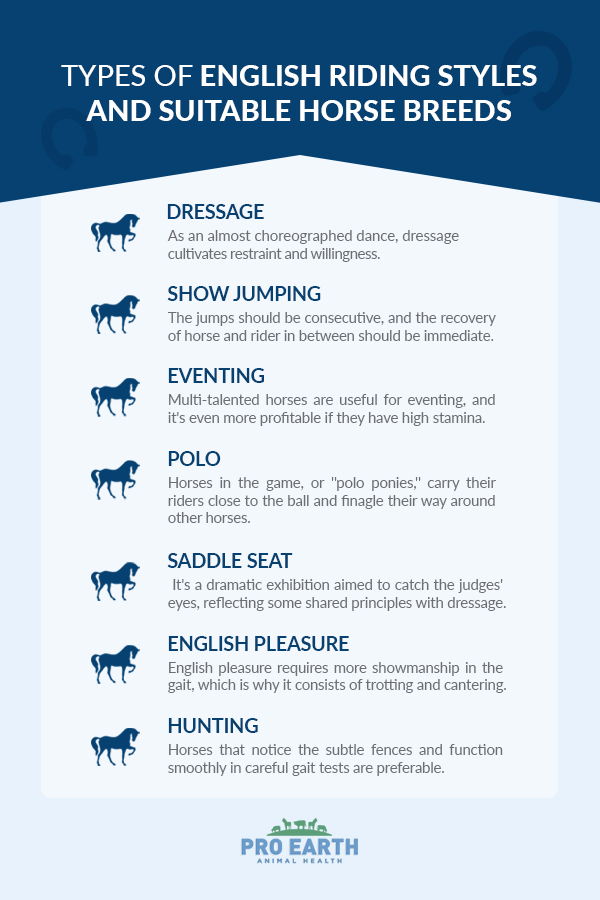
English Riding Style
English riding encompasses a broad range of disciplines, including show jumping, eventing, and hunters. Here’s an overview of English riding and its variations:
Overview of English Riding
English riding places a strong emphasis on horse and rider communication. It focuses on achieving correct posture, balance, and precise aids to effectively communicate with the horse. Riders maintain a deep seat and use subtle cues to guide the horse through various movements and jumps.
Types of English Riding
Show jumping involves navigating a course of jumps within a designated time frame. It requires agility, precision, and a strong partnership between horse and rider. Eventing combines dressage, cross-country, and show jumping, testing versatility and endurance. Hunters, on the other hand, focus on the horse’s movement and jumping style rather than speed.
Pros and Cons of English Riding
Pros:
- Develops strong communication and partnership with the horse.
- Opportunities for competitive riding across various disciplines.
- Emphasizes proper posture and balance.
Cons:
- Can be more physically demanding due to the need for precise movement.
- Requires more expensive equipment, such as English saddles and specialized riding attire.
- Less leisurely and more focused on performance.
Western Riding Style
If you envision yourself as a cowboy or cowgirl, western riding might be your ideal choice. Let’s delve into the world of western riding:
Overview of Western Riding
Western riding is characterized by a relaxed and laid-back approach. It emphasizes comfort and stability for long hours in the saddle, making it suitable for trail riding and working on ranches. Riders adopt a deep seat and utilize distinct cues, such as neck reining, to guide the horse.
Types of Western Riding
Western pleasure entails performing specific gaits, such as walking, jogging, and loping, with smooth transitions. Rodeo events, such as barrel racing and roping, test riders’ speed and horsemanship skills. Cutting, a discipline rooted in ranch work, involves separating a cow from a herd and showcasing the horse’s agility.
Pros and Cons of Western Riding
Pros:
- Emphasizes comfort and stability with larger and more comfortable saddles.
- Reflects a laid-back cowboy culture and offers a connection to Western traditions.
- Suitable for leisure riding and trail exploration.
Cons:
- Less emphasis on precision and formalities compared to other riding styles.
- Limited competitive opportunities in some regions.
- Less suitable for certain performance-oriented disciplines, such as show jumping.
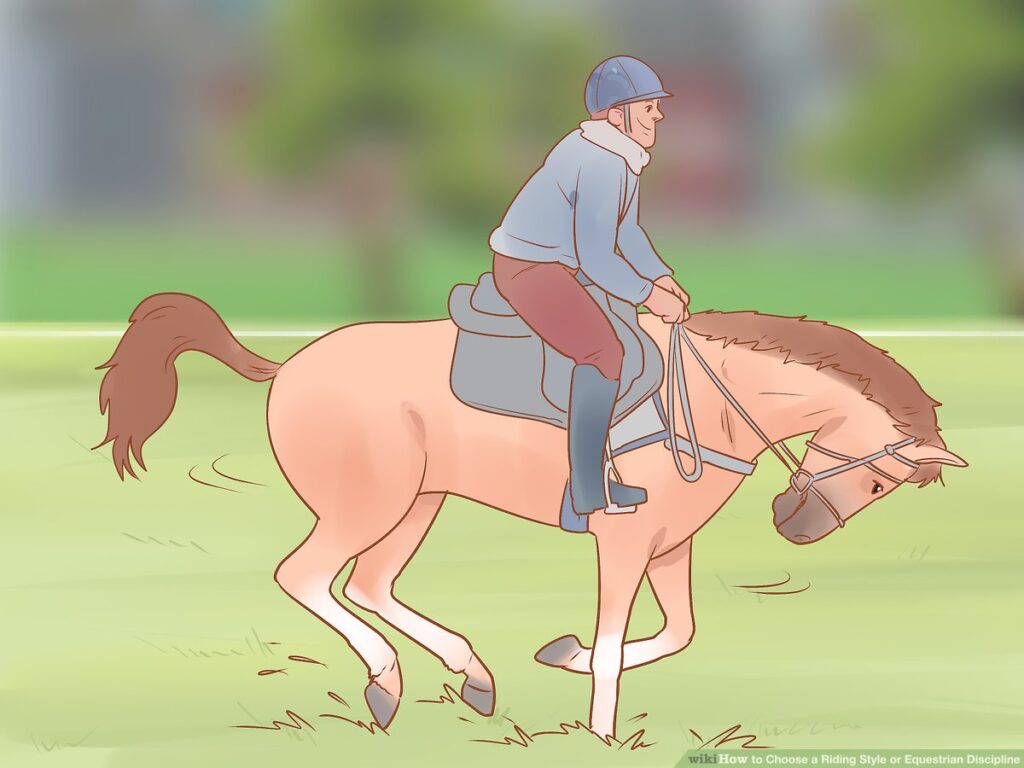
Dressage Riding Style
For riders seeking a sophisticated and harmonious connection with their horses, dressage offers a world of artistry and skill. Let’s examine dressage riding in more detail:
Overview of Dressage Riding
Dressage is often referred to as the highest expression of horse training. It focuses on developing the horse’s natural movements and balance through systematic training. Riders perform precise movements, such as lateral work and changes of gait, in harmony with their equine partners.
Dressage Training Levels
Dressage is organized into training levels, starting from basic tests suitable for beginners to advanced levels that require exceptional skills and coordination. Each level builds on the previous one, gradually developing the horse’s athletic ability and obedience.
Pros and Cons of Dressage Riding
Pros:
- Builds a strong partnership and communication between horse and rider.
- Allows riders to appreciate the artistry and precision of each movement.
- Offers a clear progression through training levels.
Cons:
- Requires meticulous attention to detail and consistent training.
- Can be challenging to achieve high levels of precision and harmony.
- Limited opportunities for competitive dressage depending on your region.
Endurance Riding Style
If long-distance riding and a test of endurance is appealing to you, endurance riding might be the perfect choice. Let’s explore the world of endurance riding:
Overview of Endurance Riding
Endurance riding involves covering long distances at a controlled pace within a specified time frame. Riders and horses must possess excellent physical fitness and stamina to navigate varying terrains and climates. Endurance rides can range from shorter distances, such as 25 miles, to grueling multi-day races covering up to 100 miles.
Preparing for Endurance Riding
Preparation is key for endurance riding. Both horse and rider require extensive conditioning, gradually increasing their mileage and training intensity. Proper hydration, nutrition, and hoof care are vital for maintaining the horse’s health throughout the endurance journey.
Pros and Cons of Endurance Riding
Pros:
- Provides a unique adventure and connection with nature.
- Tests the physical and mental stamina of both horse and rider.
- Opportunities to explore breathtaking landscapes and participate in endurance competitions.
Cons:
- Requires extensive training and conditioning for both horse and rider.
- Equipment, such as specialized endurance saddles and gear, can be costly.
- Remote locations and challenging terrain may limit access to endurance riding opportunities.
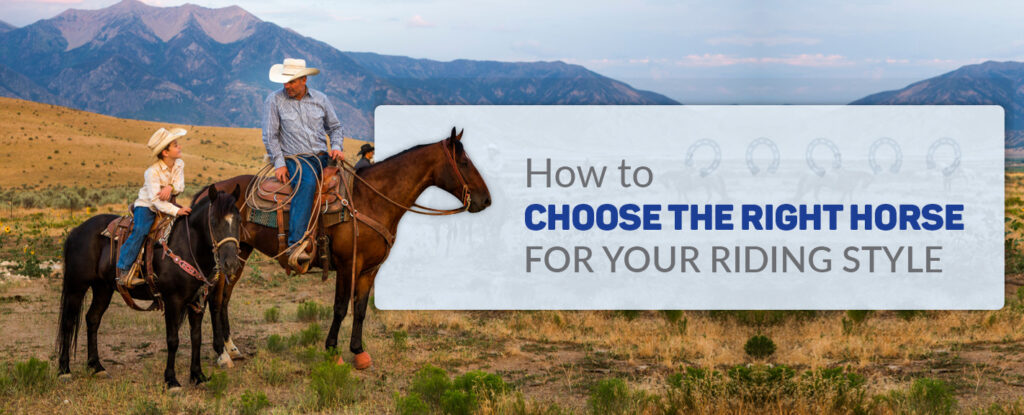
Matching Riding Style to Goals
Determining your riding goals will help you select a style that aligns with your aspirations. Let’s explore some common goals and the riding styles that suit them:
Recreational Riding
If your primary aim is to enjoy leisurely rides and explore trails, both English and Western riding styles can be suitable options. Western riding, with its comfortable saddles and laid-back approach, may be particularly appealing for recreational riders. However, English riding also offers opportunities for pleasurable trail rides while maintaining a focus on developing skills and communication with the horse.
Competitive Riding
For those seeking a competitive edge, dressage and show jumping disciplines within English riding can provide numerous opportunities. Dressage showcases the highest level of precision and movement, while show jumping tests both horse and rider’s agility and speed. Western riding enthusiasts can participate in various rodeo events such as roping and barrel racing to satisfy their competitive spirit.
Therapeutic Riding
Therapeutic riding involves using horses as a form of therapy or rehabilitation. Both English and Western riding styles can be adapted to suit different therapeutic purposes. The choice ultimately depends on the specific therapeutic goals and the preferences of the participants.
Choosing the Right Horse
Once you have decided on the appropriate riding style, it’s essential to find a horse that suits your chosen discipline. Consider the following factors when choosing a horse:
Suitability for Riding Style
Different horse breeds and individuals excel in specific riding styles. For example, a Thoroughbred may be well-suited for show jumping, while a Quarter Horse is commonly associated with Western riding disciplines. Research different breeds and consult with knowledgeable equestrians to find a horse that matches your chosen style.
Physical Characteristics
Consider the physical attributes necessary for your chosen riding style. For instance, dressage horses require a compact and athletic build, allowing them to execute intricate movements with ease. In contrast, endurance horses need to possess endurance and a strong skeletal structure to handle the rigors of long-distance riding.
Temperament and Personality
A horse’s temperament and personality play a significant role in forming a compatible partnership. Some horses may have a calm and steady demeanor, making them suitable for riders seeking stability and reliability. Others may exude energy and enthusiasm, appealing to riders who enjoy more challenging and spirited rides. Spend time interacting with different horses to find one that matches your personality and riding goals.
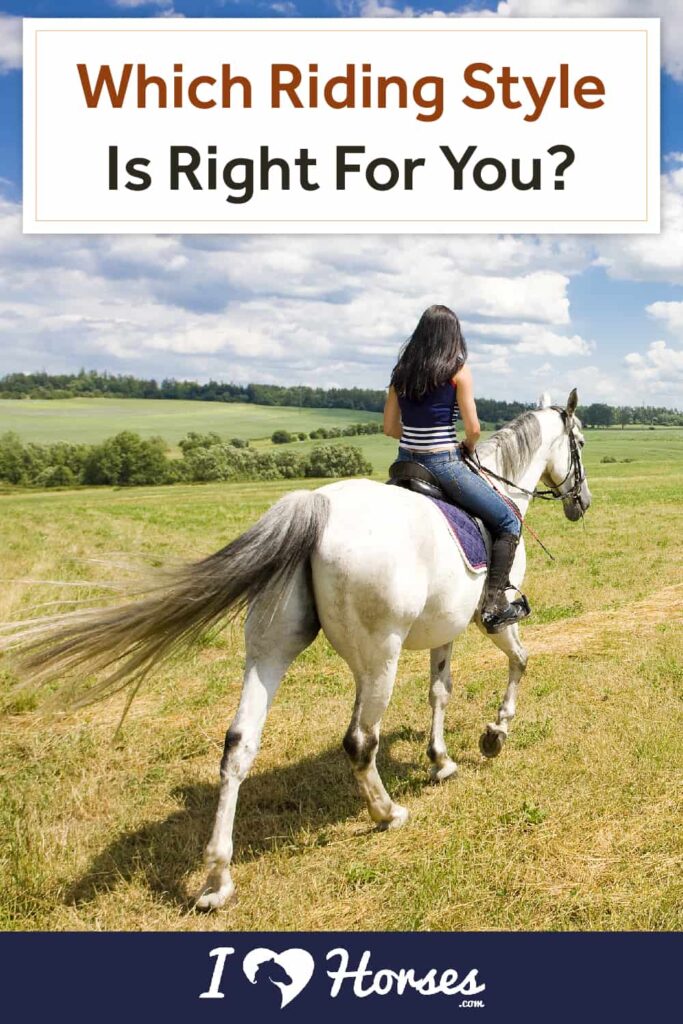
Finding Riding Facilities
To fully immerse yourself in your chosen riding style, you’ll need access to appropriate riding facilities. Consider the following options:
Riding Schools
Riding schools provide structured lessons and training programs suitable for riders of all levels. They often have well-trained horses and experienced instructors who can guide you through the learning process. Riding schools are an excellent starting point for beginners or those who prefer a more organized and supervised approach to horseback riding.
Stables and Boarding Options
If you plan to own or lease a horse, finding a suitable stable or boarding facility is crucial. Look for facilities that offer amenities such as riding arenas, trails, and qualified staff who can assist with horse care. Boarding options can range from basic pasture boarding to full-service facilities with trainers and riding lessons.
Riding Trails
For riders who prefer to explore the outdoors and enjoy scenic views, riding trails provide the perfect opportunity. Many parks and recreational areas offer designated trails suitable for horseback riding. Ensure that you follow local regulations and guidelines for trail riding to ensure a safe and enjoyable experience.
Safety Considerations
Safety should be a top priority when engaging in horseback riding. Pay attention to the following safety considerations:
Protective Gear
Wearing appropriate protective gear, such as a certified riding helmet and sturdy boots, is essential. These items can provide critical protection in case of a fall or other accidents. Invest in high-quality safety equipment and ensure that it fits properly.
Riding Equipment Maintenance
Regularly inspecting and maintaining your riding equipment is essential for safety. Check your saddle, bridle, and other gear for any signs of wear or damage. Replace any worn-out or broken items to avoid potential accidents.
Proper Warm-up and Cool-down
Before and after each ride, spend time warming up and cooling down your horse. Warm-up exercises, such as walking and trotting, prepare the horse’s musculoskeletal system for more intense work. Cooling down should include a gradual reduction in intensity to prevent stiffness and muscle soreness.
Choosing a Riding Instructor
A knowledgeable and experienced riding instructor can make a significant difference in your learning and development as a rider. Consider the following factors when choosing an instructor:
Qualifications and Experience
Look for instructors with reputable certifications and extensive experience in your desired riding style. They should possess the knowledge and skills necessary to teach proper riding techniques and horse care. Ask about their background and qualifications to ensure they can meet your learning needs.
Teaching Style and Communication
Each instructor has a unique teaching style, and it’s important to find one that aligns with your learning preferences. Some riders may thrive under a more disciplined and structured approach, while others prefer a relaxed and supportive teaching style. Choose an instructor who can effectively communicate and tailor their teaching methods to suit your needs.
Student Reviews and Recommendations
Research online reviews and seek recommendations from fellow riders to gauge an instructor’s reputation. Positive feedback from current or previous students can indicate a reliable and effective instructor. However, consider personal preferences and learning styles when evaluating reviews, as individual experiences may vary.
Budgeting for Riding
Horseback riding can involve various costs, and it is important to budget accordingly. Consider the following financial aspects:
Cost of Lessons and Training
The cost of riding lessons and training programs can vary depending on multiple factors, including the instructor’s expertise and location. Research local riding schools and instructors to get an idea of the average price range for lessons. Remember to allocate funds for ongoing training as you progress in your riding skills.
Owning a Horse vs. Lesson Rentals
Owning a horse comes with additional expenses, including feed, boarding, veterinary care, and equipment. If you choose to lease or own a horse, make sure to factor in these recurring costs. On the other hand, lesson rentals can be a more cost-effective option, especially for beginners or riders who prefer a more flexible commitment.
Additional Expenses
Don’t forget to consider additional expenses, such as riding attire, grooming supplies, and competition fees if you plan to enter shows or competitions. These costs can vary depending on your chosen discipline and personal preferences.
Maintaining Riding Skills
Becoming a skilled rider requires consistent practice and dedication. Consider the following strategies to maintain and improve your riding skills:
Practice and Consistency
Regular riding practice is essential for improving your skills and building a strong connection with your horse. Dedicate consistent time to ride and work on specific techniques or exercises indicated by your instructor. The more you practice, the more comfortable and confident you will become as a rider.
Continuing Education and Clinics
Consider attending clinics and workshops to expand your riding knowledge and learn from experienced professionals. These events provide opportunities to refine your skills and gain new perspectives. Take advantage of any educational resources available, such as books, videos, and online courses to further enhance your understanding of your chosen riding style.
Setting Riding Goals
Setting realistic and achievable riding goals can help motivate and inspire you to progress as a rider. Whether it’s mastering a specific movement or competing in a certain level, having clear objectives can provide direction and purpose to your riding journey. Work with your instructor to establish personalized goals and create a path towards achieving them.
Conclusion
Choosing the appropriate riding style for you is a significant decision that will shape your equestrian journey. Consider your experience level, personal preferences, and physical fitness when making this choice. Whether you opt for the elegance of English riding, the laid-back nature of western riding, the precision of dressage, or the endurance of endurance riding, there is a style that will suit your goals and aspirations. Remember to prioritize safety, find an experienced instructor, and budget for the necessary expenses. With dedication, practice, and the right riding style, you will embark on a rewarding and fulfilling horseback riding adventure.